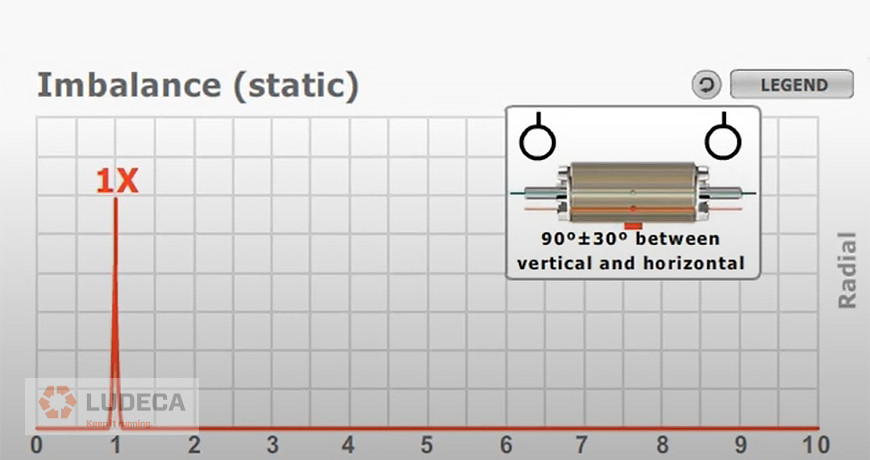
Caution: While unbalance always causes vibration at 1× RPM, 1× RPM vibration is not always caused by an unbalance. Other problems are:
- Misalignment: Misalignment can cause a 1× RPM component in the data, but it also generates a 2× RPM component and sometimes an elevated axial vibration at 1× RPM.
- Bent/Bowed Shaft: Generally, this fault will show signs of misalignment and unbalance and can change with temperature; if the data is steady then a dynamic balance can be attempted but once levels are somewhat reduced the misalignment due to the bend or bow becomes the dominant factor.
- Cracked Shaft: Data from proximity probes will generally show 1× RPM and 2× RPM. The phase would need to be monitored to help determine between an unbalance or a cracked shaft. If a balancing solution is not working as expected, then the user might want to evaluate for a cracked shaft.
- Eccentricity: An eccentric part can be balanced but that does not make it round, only balanced, so internal clearances can be constantly changing.
- Open Rotor Bars in Motors: When a motor has one or more broken rotor bars then the rotor bars adjacent to them must carry the load from the broken ones. Therefore, more heat is introduced, causing more expansion of the good rotor bars, in turn causing them to expand outward away from the centerline, thereby causing an unbalance.
- Partial Rubs: Rubs create a hot spot or area and can cause the shaft to bow, altering the mass centerline.
- Looseness: Parts that are not tight can move around, causing the mass center to be constantly changing.
- Belt Frequency Multiples: When the ratio is near an integer such as 3:1, 4:1, etc., then a multiple of the belt speed can be very close to the shaft rotational speed. Using a 1× RPM tachometer signal with a tight enough filter around 1× RPM will separate the belt speed multiple from the shaft 1× RPM vibration.
- Resonance: A rotor operating at or near its natural frequency can be difficult to balance and may not stay balanced. A natural frequency at or near the operating frequency can increase the vibration force at 1×RPM by as much as 40× or more.
Download our Unbalance & Vibration infographic a reference guide to unbalance conditions. Pair it with our advanced VIBWORKS Balancer to help you identify, correct, and avoid the unwanted consequences of equipment unbalance!
Related Blog: What is the Most Important Piece of Information Needed for Vibration Analysis?
Filed under:
Balancing by Gary James CRL
